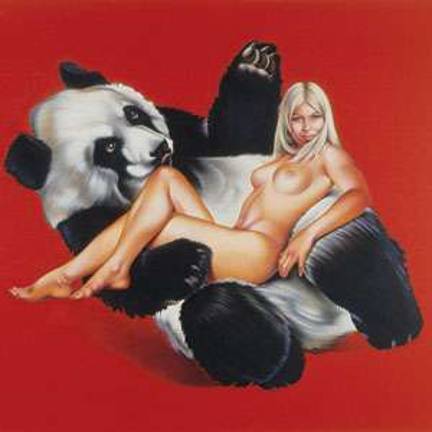Burlesquing Media: Mel Ramos's Sexy Variations

By Maureen Mullarkey It is when a cigar is not just a cigar that it is really fun. Mel Ramos understood that from the get-go. The playful, bawdy, brash retrospective selection at Bernarducci Meisel Gallery testifies to the gamesmanship that has made Ramos-and pop art, for all its flaws-so popular. In material and cultural terms, much has changed, disappeared or made an about-face since pop's heyday in the 1960s and '70s. What is left grants this condensed survey a certain piquancy. Born in Sacramento in 1935, Ramos grew up in the confident post-World War II era. America was flush with moral and military victory over two lethal enemies. Manufacturing was at a peak; we were still an export nation. Consumer culture stretched across the country like Route 66, the Mother Road of growing prosperity. Ramos' hallmark bawdiness drew equally from the pinup queens of the war years and Hollywood's postwar invention, the sex goddess. His pictorial chicanery, particularly in the first two decades of his career, drew its vitality from an association with images that kept to the naughty-but-nice side of a cultural line between erotica and pornography-a divide that no longer exists. Ramos' D-cup sweetie, holding on to a mammoth spark plug and smiling over her shoulder, is the air-headed descendent of a leggy Betty Grable, whose image, back to the viewer in swimsuit and heels, was reproduced on the noses of hundred of bombers. From Fort Sill to the Siegfried Line, tens of thousands of pilots, sailors, GIs and marines kept themselves company with photos of the wartime bombshell. Even a test version of the atomic bomb was named "Rita" and carried Rita Hayworth's picture. Jane Russell, her back against a haystack, was the sultry predecessor of "Lucky Lulu Blonde" (1965), its bare-breasted girl rampant on a pack of Lucky Strikes. The step down from real women in coy poses to Ramos' vacuous counterfeits is exquisitely tuned to the temper of its age. When selling the war effort had run its course, selling brand names rushed in to fill the vacuum. The shift from sacrifice and service to gratification and consumption was hardly an even trade. Ramos picked up on the disparity between the ethos of the barracks and of Madison Avenue with a sly humor that earns his stylized females a permanent place in 20th-century cultural history. His series of vacant studio models conforms to the Playboy paradigm while seeming to mock it. These gals have all the tactile appeal of inflatable dolls. Separated from the iconic logos that bind the work to media postures, his figures become ciphers in search of a purpose. Nudity notwithstanding, they cannot be called sensual, a quality distinct from nakedness. Inherent in Ramos' early burlesques is recognition of media's dependence on female props for pumping everything from clothes and cosmetics to cars and, today, TV news. Absent that real-world link, with its wry undertone, the tour de force flattens; there is less to compel attention. Even so, it is hard now to fault Ramos for providing an accurate barometer of vulgarity's rise to popular stature. In retrospect, Ramos' steamy female superheroes, his Ketchup Queen (as in the 1963 "Ketsup Kween") and all her fey sisters, stand in witness to a cultural moment that coarsened with our consent. "We'd live the life we'd choose?For we were young and sure to have our way." Mel Ramos: Selections from the Retrospective Through March 31. Bernarducci Meisel Gallery, 37 W. 57th St., 212-593-3757, www.bernarduccimeisel.com. This article first appeared in the March 7 issue of CityArts. For more from New York's Review of Culture, visit www.cityartsnyc.com.